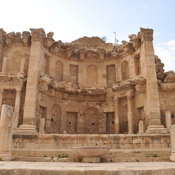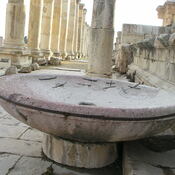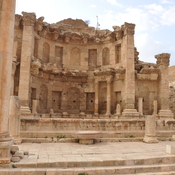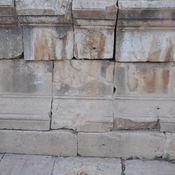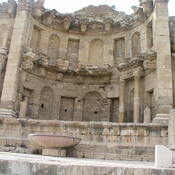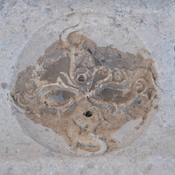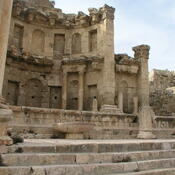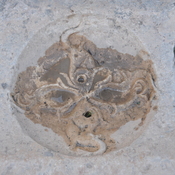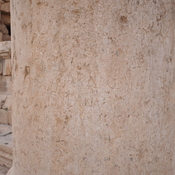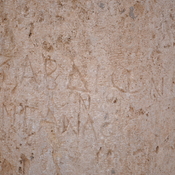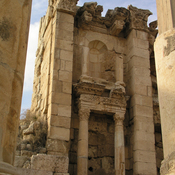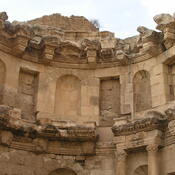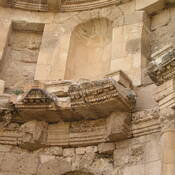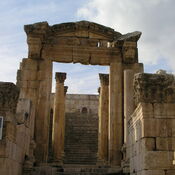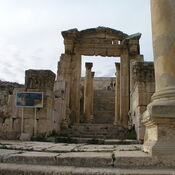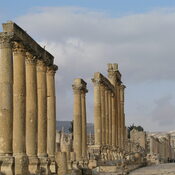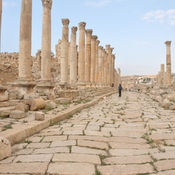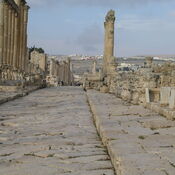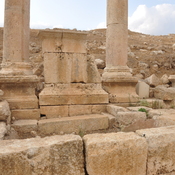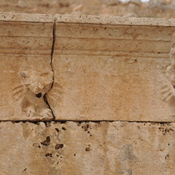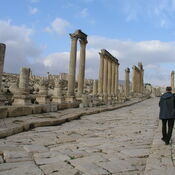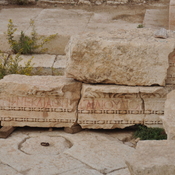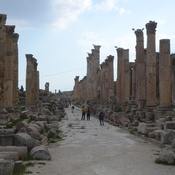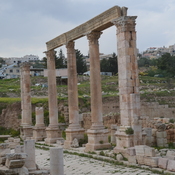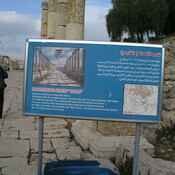Il n'y a pas une annotation en français. Présenté est une annotation en Anglais.
The temple of Dionysius of the first century had probably been abandoned in the third century when thesite was used as a place foor smelting bronze. The remains of the templewere removed to the level of its podium shortly before construction on the new building of Cathedral began and its architectural elements, such as columns, was reused as material for the masonry of the church.
See:
- Iain Browning, Jerash and the Decapolis. 1982, pp. diff.
- J. W. Crowfoot, “The Buildings Round the Fountain Court,” in Gerasa: City of the Decapolis ,ed. Carl H. Kraeling, New Haven: American Schools of Oriental Research, 1938, pp. 201–214
- Jason Moralee, The Stones of St. Theodore: Disfiguring the Pagan Past in Christian Gerasa, Journal of Early Christian Studies vol. 14/2, 2006, pp. 183-215 - https://www.academia.edu/891767/The_Stones_of_St_Theodore_Disfiguring_the_Pagan_Past_in_Christian_Gerasa
The temple of Dionysius of the first century had probably been abandoned in the third century when thesite was used as a place foor smelting bronze. The remains of the templewere removed to the level of its podium shortly before construction on the new building of Cathedral began and its architectural elements, such as columns, was reused as material for the masonry of the church.
See:
- Iain Browning, Jerash and the Decapolis. 1982, pp. diff.
- J. W. Crowfoot, “The Buildings Round the Fountain Court,” in Gerasa: City of the Decapolis ,ed. Carl H. Kraeling, New Haven: American Schools of Oriental Research, 1938, pp. 201–214
- Jason Moralee, The Stones of St. Theodore: Disfiguring the Pagan Past in Christian Gerasa, Journal of Early Christian Studies vol. 14/2, 2006, pp. 183-215 - https://www.academia.edu/891767/The_Stones_of_St_Theodore_Disfiguring_the_Pagan_Past_in_Christian_Gerasa








